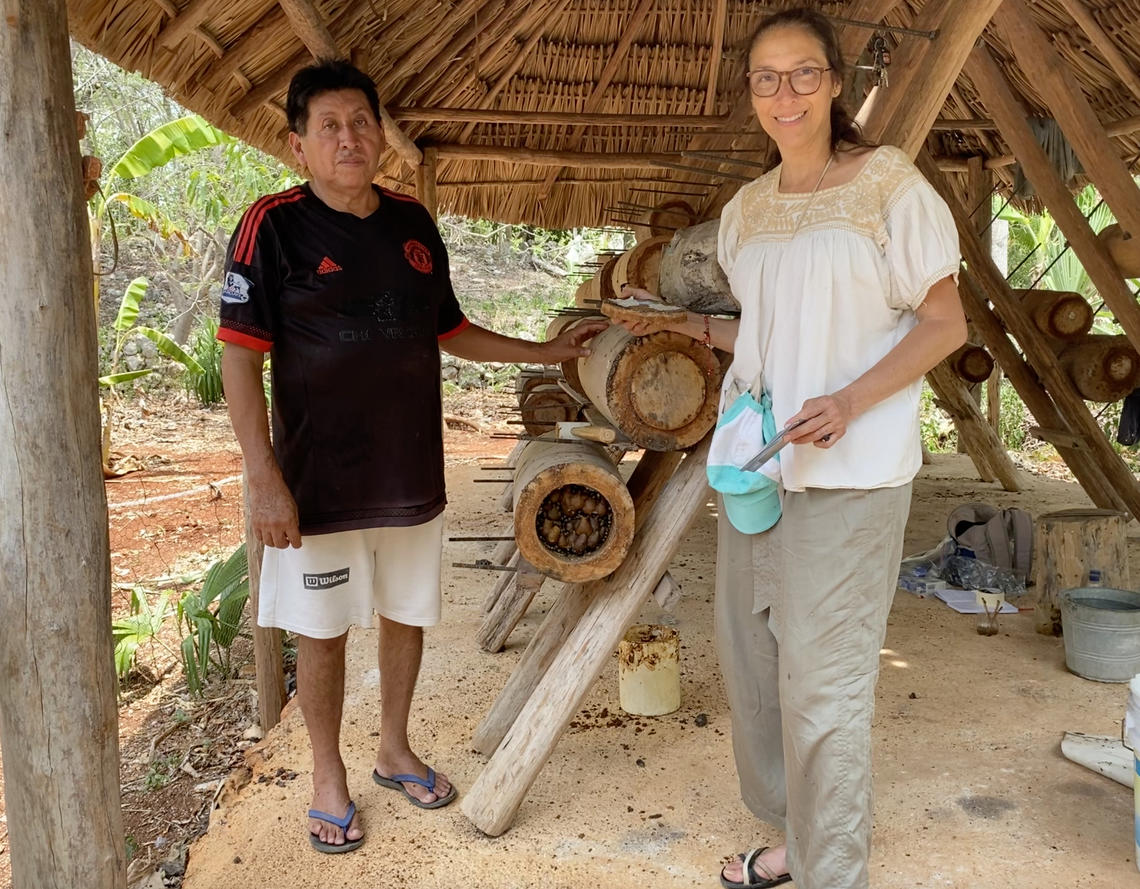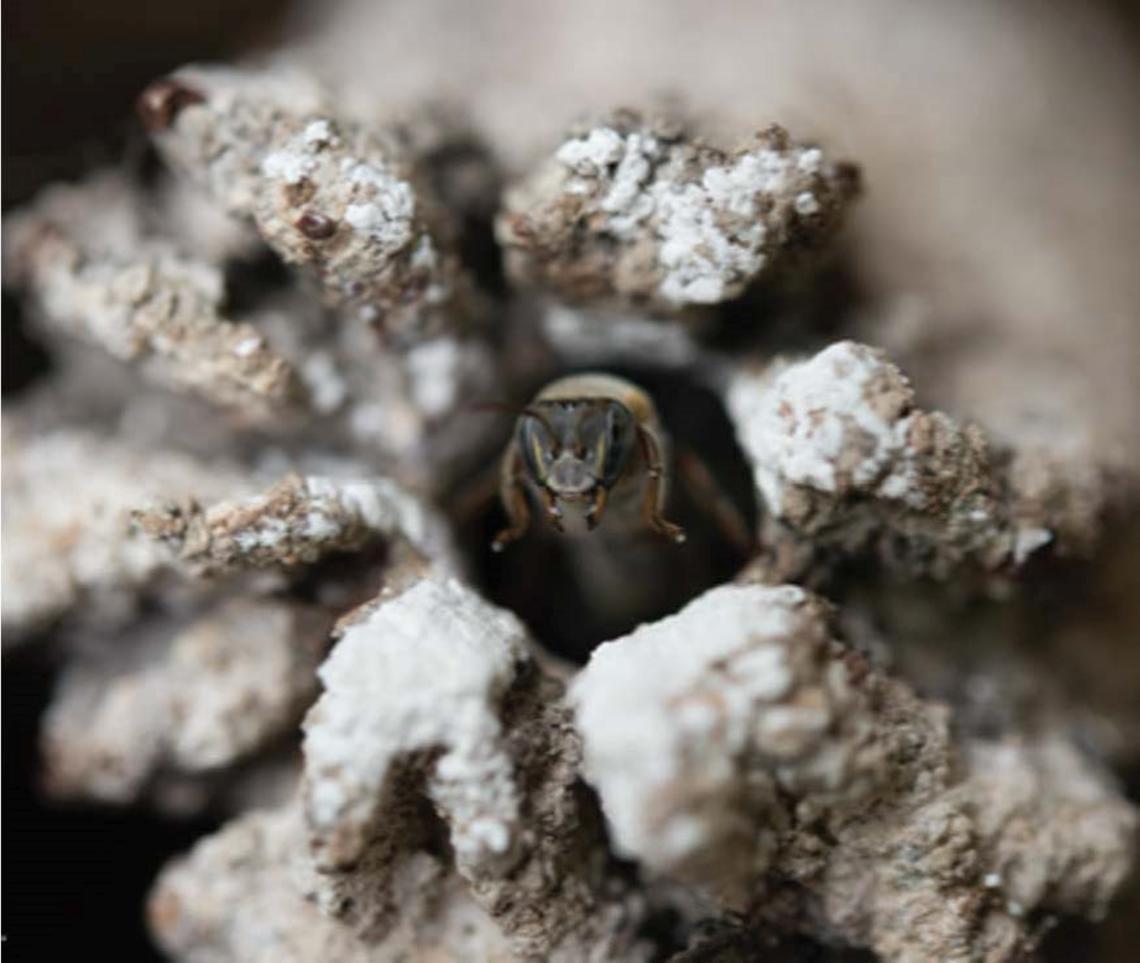Feb. 7, 2023
How Maya stingless beekeeping can help us become better stewards of culture, the environment

For a School of Architecture, Planning and Landscape PhD candidate the vital contribution of Maya stingless beekeeping to the design of ecological cities, food sovereignty, and sociocultural well-being in the Yucatan Peninsula is a powerful example.
How this traditional practice can inform these dynamics is at the heart of Veronica Briseño Castrejón’s research — “Unveiling Maya Stingless Beekeeping in the Yucatan Peninsula of Mexico” — in the southeast of Mexico.
An ancestral practice, Maya stingless beekeeping integrates ecological and cultural ways of knowing that are linked intrinsically with Maya dwellings, traditional crops, and native species in the tropical forests of the Yucatan Peninsula.
“Pollinators like the Maya stingless bees are not only important for our food crops and to sustain the way we live, but also because they are part of the ways of being and knowing of the Maya, a culture that has a lot to share, including its wise knowledge and its relationship with nature and with life,” says Briseño.

Yucatan local Pablo Dzib has been central to Veronica Briseño Castrejon’s PhD research in the Yucatan Peninsula.
Veronica Briseño Castrejon
According to Briseño, this practice represents a vital and interdependent balance of cultural norms and local biodiversity that has defined the management of the Maya territories in a sustainable manner for thousands of years.
As part of the study, Briseño also examines the power relations that, from the Maya perspective, undermine traditional stingless beekeeping practices and knowledge, such as current industrial projects that negatively impact the ecosystem, and traditional Maya dwellings and crops.
Urbanization and Maya stingless bees
International mega projects, industrial agrobusiness, solar panel and wind farms, mega pork farms, and deforestation for touristic and residential developments across the Yucatan peninsula profoundly impact and change the traditional dynamics in Maya communities, says Briseño.
These stressors dramatically impact pollinators such as bees, insects, birds, and bats, who affect 75 per cent of the world's crop production and almost 90 per cent of the leading food crops worldwide. Currently, more than 40 per cent of wild pollinator species are at risk of extinction.
For this reason, Briseño studies the ancient design of Maya beekeeping and dwellings and compares them to the Maya biocultural landscapes and experiences of today, showcasing how Maya beekeeping has been impacted, what lessons can be brought back from the ancestral past, and how this learning can help preserve Maya stingless beekeeping.
Furthermore, native stingless bees, and Indigenous Maya traditional stingless beekeepers and peasants, are key to sustaining tropical forest, the last lungs of the world, Briseño says.
“It’s urgent that we analyze the human impact in all of this, with biodiversity at the centre. It’s equally critical that we look at the ways we relate to one another, and that we look at production, within our habitat, in a different way,” Briseño says. “We depend on each other to survive.”
Inspiration for the study
Many years ago, before starting her doctorate at SAPL, Briseño founded Aula Verde, a non-profit organization in Mexico that brought environmental education to children in elementary school.

A Maya stingless beehive.
Veronica Briseño Castrejon
Her yearning to raise younger generations’ awareness about the iconic stingless bees, traditionally known as ko’olel kaab and depicted in the Maya Tro-Cortesiano Codex (one of three surviving pre-Columbian Maya books dating to the Postclassic period of Mesoamerican chronology) inspired Briseño to visit the Yucatan Peninsula.
“It was unforgettable. They are harmonious and I just fell in love with them,” recalls Briseño. “So, I decided to understand their problems and their beekeepers, who are Maya people.”
As part of her research, Briseño learned more about the Mayan language to better communicate with the community, including traditional milperos (multi crop and corn sowers) and farmers, who hailed mainly from the Quintana Roo State. But the insights she gained go beyond the agricultural and the terrestrial.
“Words are not enough to express how much is embraced in the marvellous Maya cosmogony and their philosophy,” she says.
Lessons learned
Before this study, Briseño wanted to better understand how, through her background as an architect, she can impact not only the territories of bees, but also on habitats at large.
“I believe that this study makes the case to reclaim the values of respect and reciprocal well-being within our environment,” she says.
“Better understanding Maya stingless beekeeping practice will also help us to acknowledge and learn more from different ways of knowing and being, such as their traditional agricultural systems, vernacular architecture, and their cultural approaches.”
The ancestral Maya built green cities. So, for Briseño, it’s important to learn from them in order to build our cities in a manner that is more ecologically sound, socially sustainable, without racism, and with greater participatory democracy — from the dwelling to the forest.
“We must allow ourselves to see and learn from other ways of living, to relate to nature and to find new ways to construct our urban environment.”
This research is funded by a grant from the Eva Crane Trust (U.K.), and is supervised by Dr. David Monteyne, PhD, at the School of Architecture, Planning and Landscape, Alberta’s only architecture school.






